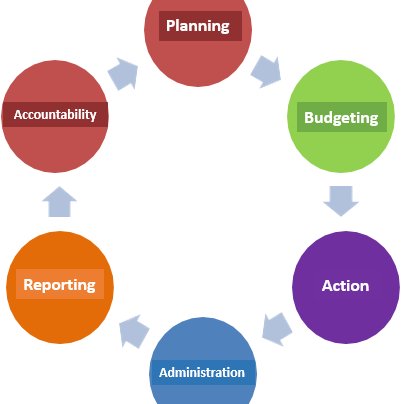
There are many kinds of financial analysis. There are several types of financial analysis. Each type has its own advantages and drawbacks. Learn more about each type of analysis and their impact on company finances. Learn more about each type of analysis and the importance to the tools and techniques you use. But how can you decide which one to use. This article will cover some of the most important types of financial analytics.
Ratio analysis
Financial ratio analysis can be useful in many situations, such as industry comparisons or evaluating a company’s profitability. Companies using financial ratio analysis must break out their data by divisions to avoid being judged unfairly by investors. Generally, a company will use ratio analysis to measure its performance relative to its competitors, industry peers, and competitors in the same industry. However, some companies "fudge" numbers to make the results seem better than it really is.
Ratio analysis is especially useful in determining a company's profitability. This measure can be used to help businesses understand their overall profitability. It also helps them determine how efficient they are. It can also help to identify areas where a company's resources are not being used effectively. Analyzing the ratio of various areas of a company’s financial performance can help external and internal analysts determine which areas need to be improved and expanded. Moreover, these analyses can help identify trends and help make informed decisions.
Scenario and sensitivity analysis
Financial analysts use two different types of financial analysis. The two types of financial analysis used by financial analysts are sensitivity analysis and scenario. They analyze how different variables can affect a business's financial position. Scenario analysis examines a particular scenario. Sensitivity analysis analyzes a wide range of possible outcomes. Investors can use the sensitivity analysis to determine how different changes might affect their business's profitability. These two methods can be used for a variety of reasons. Here are examples of each type.
Financial models often include worksheets that allow for scenario and sensitivity analysis. However, these two types of analysis should not be confused. Scenario analysis is a type of financial model in which the company projects what would happen under different scenarios. If a single variable causes a 10% decrease in revenue, the scenario may be called "Downside Scenario", while sensitivity analysis only deals with a percentage of that decrease. A financial analyst can help companies make more informed decisions by using both types of analysis in tandem.
Vertical analysis

In financial analysis, vertical analysis requires a company's balance sheet. A balance sheet shows all the total assets, liabilities, and equity of a company. A balance sheet shows the total assets of a company, along with their liabilities and equity. This serves as a benchmark number. A company's assets are generally current, while its liabilities are mostly fixed. You can identify trends and potential problems by comparing both sets of financial statements. Vertical analysis is a good choice for many people.
This analysis is not recommended by all businesses but it is a great method to compare and analyze the profitability of various companies. It is particularly helpful in identifying areas that are experiencing significant financial change, such as the sales cost. This type of analysis will require that you gather financial statements for each company, and compare them. The information that you gather can help to formulate recommendations for the success and growth of your company.
Historical trend analysis
Historical trend analysis is a great tool for business owners. Financial trends show that profitability is moving in tandem with revenue, and the year 2018 has seen a higher net income due to lower provision for taxes. This tool can help you assess the impact of key business decisions like raising prices or lowering expenses. A historical trend analysis allows businesses to see how they compare to other companies. It is an invaluable tool for tracking and assessing business performance.

This analysis is particularly useful for financial data that spans many years. It is used to identify trends in financial statements and any inaccuracies. It can also help you determine what factors are driving these trends. This type of analysis can be useful in the financial world, and it is essential for making data-driven decisions. It's important to learn the principles of financial trends analysis and how they relate to your industry if you're an investor.
FAQ
What does an auditor do exactly?
Auditors look for inconsistencies between financial statements and actual events.
He validates the accuracy of figures provided by companies.
He also verifies that the company's financial statements are valid.
What is bookkeeping?
Bookkeeping is the practice of maintaining records of financial transactions for businesses, organizations, individuals, etc. It includes recording all business-related expenses and income.
Bookkeepers track all financial information such as receipts, invoices, bills, payments, deposits, interest earned on investments, etc. They also prepare tax returns as well other reports.
Why is reconciliation important
It's important, as mistakes are possible at any moment. Mistakes include incorrect entries, missing entries, duplicate entries, etc.
These problems can cause serious consequences, including inaccurate financial statements, missed deadlines, overspending, and bankruptcy.
Statistics
- According to the BLS, accounting and auditing professionals reported a 2020 median annual salary of $73,560, which is nearly double that of the national average earnings for all workers.1 (rasmussen.edu)
- BooksTime makes sure your numbers are 100% accurate (bookstime.com)
- In fact, a TD Bank survey polled over 500 U.S. small business owners discovered that bookkeeping is their most hated, with the next most hated task falling a whopping 24% behind. (kpmgspark.com)
- The U.S. Bureau of Labor Statistics (BLS) projects an additional 96,000 positions for accountants and auditors between 2020 and 2030, representing job growth of 7%. (onlinemasters.ohio.edu)
- Given that over 40% of people in this career field have earned a bachelor's degree, we're listing a bachelor's degree in accounting as step one so you can be competitive in the job market. (yourfreecareertest.com)
External Links
How To
How to get an accounting degree
Accounting is the recording and keeping track of financial transactions. It can be used to record transactions between individuals and businesses. The term account refers to bookskeeping records. Accounting professionals create reports based upon these data in order to assist companies and organizations with making decisions.
There are two types of accountancy - general (or corporate) accounting and managerial accounting. General accounting involves the reporting and measurement business performance. Management accounting is about measuring, analyzing and managing resources within organizations.
An accounting bachelor's degree can help students become entry-level accountants. Graduates can also opt to specialize in areas such as auditing, taxation or finance management.
A good knowledge of the basics of economics is essential for students who wish to study accounting. This includes cost-benefit analysis and marginal utility theory. Consumer behavior and price elasticity are just a few examples. They should also be able to understand macroeconomics, microeconomics and accounting principles as well as various accounting software packages.
A Master's degree in Accounting requires that students have successfully completed six semesters worth of college courses. These include Microeconomic Theory, Macroeconomic Theory. International Trade. Business Economics. Financial Management. Auditing Principles & Procedures. Accounting Information Systems. Cost Analysis. Taxation. Human Resource Management. Finance & Banking. Statistics. Mathematics. Computer Applications. English Language Skills. Graduate Level Examinations are required for all students. This examination is normally taken after students have completed three years of education.
Candidats must complete four years' worth of undergraduate study and four years' worth of postgraduate work in order to be certified public accountants. After passing the exams, candidates can apply to register.